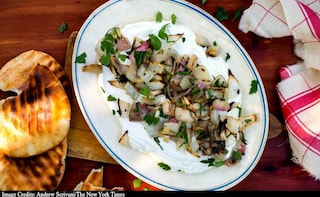In my backyard, summer grilling is hot, fast and furious. My aim is to cook dinner quickly so that I can close the grill and eliminate one of the heat sources in my already stifling garden.
Advertisement
Advertisement
Advertisement
Advertisement
For the latest food news, health tips and recipes, like us on Facebook or follow us on Twitter and YouTube.
Advertisement
